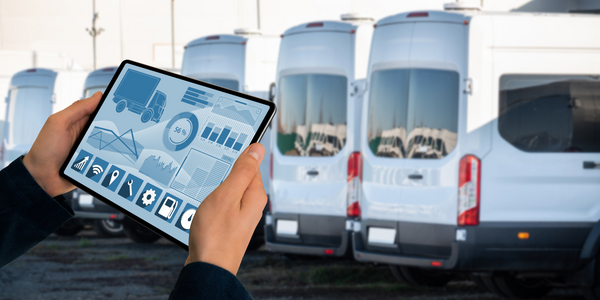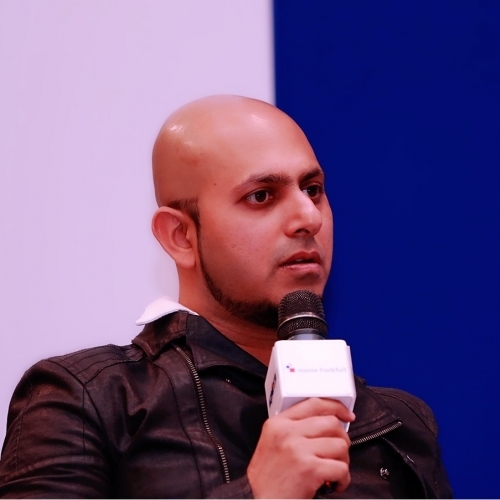Intel
The Internet of Things Starts with Intel Inside.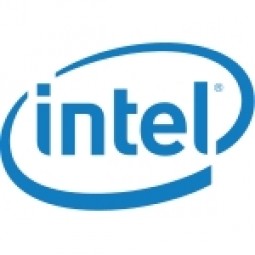
Overview
|
HQ Location
United States
|
Year Founded
1968
|
Company Type
Public
|
Revenue
> $10b
|
|
Employees
> 50,000
|
Website
|
Stock Ticker
NASDAQ: INTC
|
Twitter Handle
|
Company Description
Intel designs, manufactures, and sells integrated digital technology platforms worldwide. The company's platforms are used in various computing applications comprising notebooks, desktops, servers, tablets, smartphones, wireless and wired connectivity products, Wearables, transportation systems, and retail devices. It offers microprocessors that processes system data and controls other devices in the system; chipsets, which send data between the microprocessor and input, display, and storage devices, such as keyboard, mouse, monitor, hard drive or solid-state drive, and optical disc drives; system-on-chip products that integrate its central processing units with other system components onto a single chip; and wired network connectivity products.
Featured Subsidiaries/ Business Units:
- Intel Inside
- Intel Data Center Manager (DCM)
- Saffron Technology
- Wind River
Featured Subsidiaries/ Business Units:
- Intel Inside
- Intel Data Center Manager (DCM)
- Saffron Technology
- Wind River
IoT Solutions
From monitoring the energy efficiency of our homes to finding more productive ways to feed the global population, harnessing these connected “things” and turning massive amounts of raw data into actionable insights will have a transformative impact on society. However, both technical and business challenges are slowing IoT adoption. Decision makers within companies are trying to gain a better grasp of expected ROI, cost, and scalability, while IT managers struggle with integration, Interoperability, management, and the need to tailor to specific verticals.
Intel is addressing these challenges by offering open and scalable products, fostering a thriving ecosystem, and showing what is possible with pilots and use cases that demonstrate the potential value and ease of deployment. Intel offers a comprehensive portfolio of end-to-end hardware and software with built-in security.
To make IoT simpler to deploy and scale across applications quickly, Intel offer the Intel IoT Platform, a design blueprint that details how to securely connect and manage a fleet of “things” from small sensors to huge server farms that make up the cloud, while using various analytics tools and technologies along the way.
Intel is addressing these challenges by offering open and scalable products, fostering a thriving ecosystem, and showing what is possible with pilots and use cases that demonstrate the potential value and ease of deployment. Intel offers a comprehensive portfolio of end-to-end hardware and software with built-in security.
To make IoT simpler to deploy and scale across applications quickly, Intel offer the Intel IoT Platform, a design blueprint that details how to securely connect and manage a fleet of “things” from small sensors to huge server farms that make up the cloud, while using various analytics tools and technologies along the way.
Key Customers
Apple, Dell, HP, NTT Data, Mandic Cloud Solutions, Shanda Games G Cloud, Baidu, Chunghwa Telecom, KT Corporation, BMW
Subsidiary
IoT Snapshot
Intel is a provider of Industrial IoT platform as a service (paas), analytics and modeling, networks and connectivity, processors and edge intelligence, drones, sensors, infrastructure as a service (iaas), functional applications, application infrastructure and middleware, actuators, and cybersecurity and privacy technologies, and also active in the aerospace, automotive, construction and infrastructure, consumer goods, electrical grids, electronics, finance and insurance, healthcare and hospitals, oil and gas, railway and metro, renewable energy, security and public safety, specialty vehicles, telecommunications, transportation, and utilities industries.
Technologies
Sensors
Autonomous Driving Sensors
Environmental Sensors
Camera / Video Systems
Dimension & Displacement Sensors
GPS
Pressure Sensors
Temperature Sensors
Utility Meters
Vibration Sensors
Analytics & Modeling
Big Data Analytics
Computer Vision Software
Machine Learning
Predictive Analytics
Real Time Analytics
Platform as a Service (PaaS)
Data Management Platforms
Application Development Platforms
Connectivity Platforms
Device Management Platforms
Functional Applications
Enterprise Asset Management Systems (EAM)
Fleet Management Systems (FMS)
Remote Monitoring & Control Systems
Application Infrastructure & Middleware
Data Exchange & Integration
Database Management & Storage
Middleware, SDKs & Libraries
Use Cases
Asset Health Management (AHM)
Automated Disease Diagnosis
Autonomous Transportation
Computer Vision
Cybersecurity
Edge Computing & Edge Intelligence
Fleet Management
Onsite Human Safety Management
Remote Asset Management
Remote Patient Monitoring
Vehicle Performance Monitoring
Virtual Prototyping & Product Testing
Visual Quality Detection
Functional Areas
Industries
Services
Technology Stack
Intel’s Technology Stack maps Intel’s participation in the platform as a service (paas), analytics and modeling, networks and connectivity, processors and edge intelligence, drones, sensors, infrastructure as a service (iaas), functional applications, application infrastructure and middleware, actuators, and cybersecurity and privacy IoT Technology stack.
-
Devices Layer
-
Edge Layer
-
Cloud Layer
-
Application Layer
-
Supporting Technologies
Technological Capability:
None
Minor
Moderate
Strong

Supplier missing?
Start adding your own!
Register with your work email and create a new supplier profile for your business.
Case Studies.
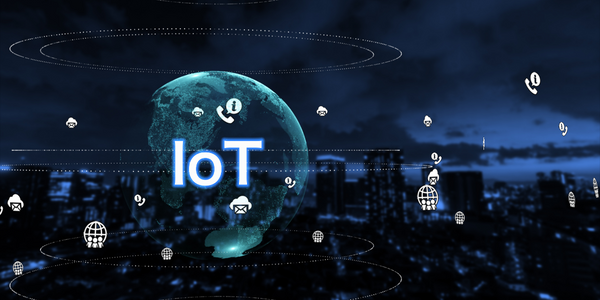
Case Study
Wearables for Connected Workers
Together, Honeywell and Intel have developed a IoT proof of concept (PoC) for the Connected Worker. The Connected Worker can take many forms - factory laborer, mine worker, first responder, firefighters and more. For each environment and worker role, a different selection of sensors may be appropriate to provide the most meaningful IoT-fueled dataset to represent that individual worker asset. As with most IoT solutions, it is critical to avoid being overwhelmed by a steady stream of meaningless data. Rather, it is essential to send select actionable intelligence to the cloud for visualization and customized alert notifications. The downside is that data from individual wearable devices - if viewed independently - can potentially cause false alarms and contribute to inefficiencies in a manpower as a result. Fusing sensor technology with big data processing (hub/gateway), analytics - all in the cloud - is the key to improving local intelligence as well as remote visualization of actionable intelligence.

Case Study
Taking Oil and Gas Exploration to the Next Level
DownUnder GeoSolutions (DUG) wanted to increase computing performance by 5 to 10 times to improve seismic processing. The solution must build on current architecture software investments without sacrificing existing software and scale computing without scaling IT infrastructure costs.
.png)
Case Study
Improving Vending Machine Profitability with the Internet of Things (IoT)
The vending industry is undergoing a sea change, taking advantage of new technologies to go beyond just delivering snacks to creating a new retail location. Intelligent vending machines can be found in many public locations as well as company facilities, selling different types of goods and services, including even computer accessories, gold bars, tickets, and office supplies. With increasing sophistication, they may also provide time- and location-based data pertaining to sales, inventory, and customer preferences. But at the end of the day, vending machine operators know greater profitability is driven by higher sales and lower operating costs.

Case Study
Building Smart IoT-Connected Railways
• Difficult environment. Communications equipment on trains must function properly in harsh conditions, such as environment temperatures ranging from -25°C to +85°C, according to the EU standard EN50155.• Railway regulations. All products in a train must adhere to strict standards, relating to working vibration, power consumption, and lifetime.• Lengthy process. Time to market in the railway industry can take years from concept to mass production, so product design requires a solid long term vision.

Case Study
SAS® Analytics for IoT: Smart Grid
Companies face falling revenues, rising infrastructure costs, and increasing risk of outages caused by inconsistent energy production from renewable sources. Less money is coming in as more people and organizations take steps to curb their energy use. Utilities are paying more to maintain and build infrastructure due to increasing complexity, resulting from the rising number of intermittent and variable renewable energy sources connected in the distribution grid.

Case Study
A Smarter Brain for Your Train…
Have you ever felt overloaded by too much sensory input? The results can be problematic, even risky if you’re driving at the time. The same holds true for trains, ships, oil rigs, and many other industrial assets. The data processing challenges on these complex machines are growing rapidly as the number of sensors increases; yet so are the opportunities to transform operations by using all the available data effectively. A modern locomotive, for example, has as many as 200 sensors generating more than a billion data points per second.

Case Study
Transcode Creates a Vehicle Fleet Management solution with Intel IoT Gateway
Problem: Inefficient vehicle fleet management hinders business efficiency, employee productivity, and revenue growth opportunities. - Difficult to manage fleet operations, particularly in tracking their daily activities- Challenge for business owners to monitor their drivers’ behavior and daily productivity. Business owners need to ensure that their drivers are following business rules and policies.
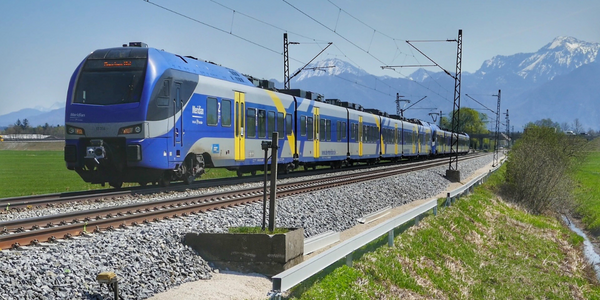
Case Study
Connected Transportation: A Smarter Brain for Your Train with Intel
A modern locomotive, for example, has as many as 200 sensors generating more than a billion data points per second. Vibration sensors surround critical components, video cameras scan the track and cab, while other sensors monitor RPM, power, temperature, the fuel mix, exhaust characteristics, and more.Most of today’s locomotives lack sufficient on-board processing power to make full use of all this data. To make matters worse, the data from different subsystems, such as the brakes, fuel system, and engine, remain separate, stored in isolated “boxes” that prevent unified analysis. The data is available, but the technology needed to process it in the most effective manner is not. As new sensors are added to the machine, the problem escalates.

Case Study
Eco-Friendly, Engaging SAVORTEX Transforms the IoT
Of the 70 million corporate washrooms, 20 percent are equipped with environmentally unfriendly, inefficient, and unhygienic hand-dryers and around 80 percent offer expensive paper towels that create three million tons of waste. As such, reducing building management costs, boosting facility efficiencies, and cutting energy use is very lucrative. SAVORTEX has built the world's first IoT-enabled messaging hand-dryer to disrupt this inefficient sector and transform corporate washrooms into smart spaces. Built on Intel® technology, the SAVORTEX AdDryer* uses the Internet of Things (IoT) to deliver waste savings, alert cleaners to washroom needs based on usage, and engage consumers with tailored, high-definition video messages, allowing enterprises to transform costly commercial washrooms into connected, hygienic, and sustainable revenue-producing assets.ChallengesIngrained issues: High costs, inefficient maintenance, and energy consumption in washrooms make them difficult to manage. SAVORTEX wanted to solve multiple problems at once.Excessive waste: The prevalent drying choice of expensive paper towels significantly impacts the environment in both manufacture and disposal.Status quo: Conventional brushed-motor hand-dryers are energy-hungry and have a short life-expectancy so are costly to run, but finding budget to deploy new solutions on the necessary scale can be difficult.

Case Study
Machine Learning Helps Intel Rediscover Their Customer Demographic
Intel’s sales and marketing organization strives to increase communications with resellers relating to new industry segments as they evolve and to encourage resellers to join webinars or conferences to gain a better understanding of Intel’s offerings for these new markets. Because sales and marketing teams must focus their resources on those resellers with the highest probability of generating sales, sending the right message to the right reseller helps drive value for the sales pipeline. We needed a machine-learning system to help our sales and marketing teams identify the best prospects within Intel’s large pool of resellers.

Case Study
GenoSpace Boosts Population Analytics and Application Performance
Since maintaining the confidentiality of human genetic data is of paramount importance to GenoSpace, the company has made security a top priority. In an environment where breaches involving healthcare data have reached alarming levels, GenoSpace understands the costly business impact of noncompliance with HIPAA patient privacy regulations and industry-leading data security practices. For example, the Identity Theft Resource Center’s 2014 annual list of security breaches points out that the medical/healthcare sector accounted for more than 42.5% of all the breaches listed, topping all other categories. Since reporting requirements began, the US Department of Health and Human Services has tracked 944 incidents involving approximately 30 million individuals. Along with the persistence and enormity of this problem comes financial fallout. For example, in its study, 2014 Cost of Data Breach Study: Global Analysis, the Ponemon Institute estimated that the average cost of a data breach in 2014 was $3.5 million, an increase of 15% over 2013. Additionally, the average cost per record across all sectors also increased, from $188 to $201—and the per capita cost for healthcare was the highest across all industries at $316 per patient. And the typical fine for a data breach runs up to $1.5 million per incident. The cost of breaches to the healthcare sector overall is estimated at $5.6 billion annually.
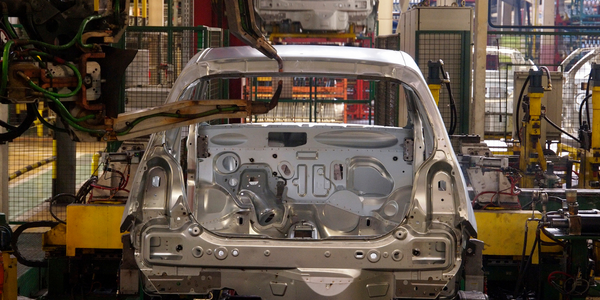
Case Study
Parts Quality Gets Robotic Boost
When manufacturers, such as the world's top car makers and automotive parts suppliers, produce components in their factories, traditional QA testing has been limited to verifying the quality of random parts pulled off the line throughout the day.It was time consuming to perform the detailed tests required, and defective parts could get through despite randomized tests.If a defective part caused a recall or accident, manufacturers could face costly litigation or irreparable damage to their reputation.

Case Study
Adding Intelligence to Airport Transfers
Maintain Momentum Airports need to keep billions of passengers moving every year, while aligning with strict security protocols. Improve Control Airport buses need careful and constant logistical management, with dispatchers tracking operational, capacity and geographic data for each bus. Enhance the JourneyPassengers appreciate being well informed about where to go next, so easily accessible and available details enrich their traveling comfort.

Case Study
Employing Intel Deep Learning SDK Toward Bettering Image Recognition Models
In this case study, the challenge explored involves LeNet*, one of the prominent image recognition topologies for handwritten digit recognition. In the case study, we dive into how the training tool can be used to visually set up, tune, and train the Mixed National Institute of Standards and Technology (MNIST) dataset on Caffe* optimized for Intel® architecture. Data scientists are the intended audience.

Case Study
Smart Support for Vulnerable Adults from Cascade3d
•Smart healthcare. Cascade3d wanted to integrate its analytics into an IoT platform so that data from sensors could be gathered, filtered, and analyzed to transform and optimize professional healthcare.• Education. IoT solutions are seen to be quite complex and can be daunting for less technical people, so adoption in the healthcare industry requires education as well as low barriers to use.• Data privacy. Especially when dealing with vulnerable individuals, the security of all data collected is paramount, as is sensitively dealing with this data.

Case Study
Higher Ambient Data Center Temperatures Reduce Costs
As a pioneering IT enabler and technology driver, Intel’s objective was to demonstrate to clients that the modern data center operating environment does not require the level of cooling traditionally thought necessary to guarantee reliable performance. Given the significant energy cost and capital expense associated with cooling technology, there would be considerable potential for dramatically reducing TCO by designing and building data center facilities that run at a higher ambient temperature.Demonstrating the validity of this approach required an accurate and straightforward way to scientifically prove how TCO could be reduced without business risk or compromising IT performance. Intel needed a dependable solution that would rapidly allow a detailed assessment of the entire data center environment under varying workloads and conditions, holistically and at an individual component level.
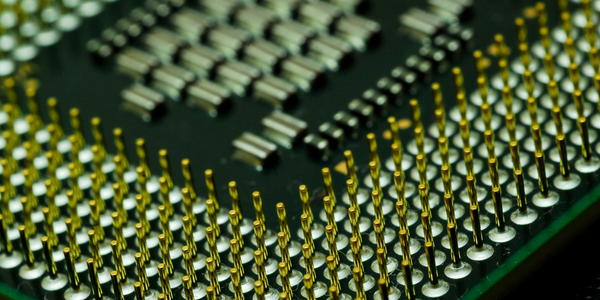
Case Study
Enhancing The Supply Chain With Intel Architecture
Support more complex business needsBoth the increasing number of customers and more complex business demand a higher-performing acquisition planning system (APS) to ensure stable and reliable operation. Improve business agilityImprove the flexibility of the APS to increase business agility. Reduce costsEnhance the APS with better performance and higher scalability at a lower cost to enable the company's future development.
Similar Suppliers.
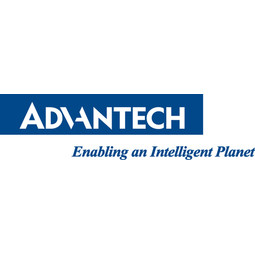
Supplier
Advantech
Founded in 1983, Advantech is a leader in providing trusted innovative embedded and automation products and solutions. Advantech offers comprehensive system integration, hardware, software, customer-centric design services, and global logistics support; all backed by industry-leading front and back office e-business solutions.
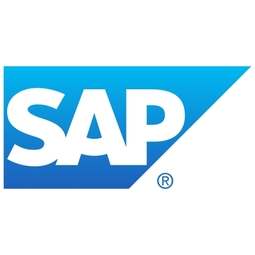
Supplier
SAP
SAP is the leading provider of enterprise resource planning (ERP) software used to integrate back-office functions such as distribution, accounting, human resources, and manufacturing. The backbone of SAP's products has been its On-Premise offerings, spearheaded by its Business Suite, which includes ERP and customer relationship management (CRM) software, among others. Year founded: 1972 Revenue: $17.6 billion (2014) NYSE: SAP
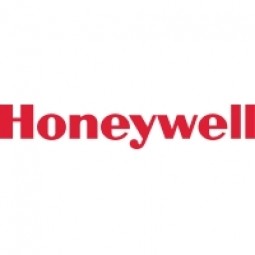
Supplier
Honeywell
Honeywell invents and manufactures technologies to address some of the world’s toughest challenges initiated by revolutionary macrotrends in science, technology and society. They improves business performance for customers with automation and control solutions, equipment and services that enhance safety, reliability and efficiency. Year founded: 1906 Revenue: $40.3 billion (2014) NYSE: HON
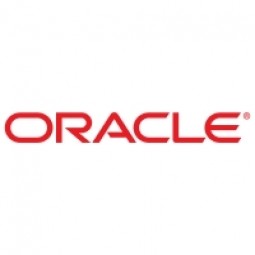
Supplier
Oracle
Oracle is a leader in enterprise software and provides hardware and services to help companies improve their processes. Best known for its focus on databases, it offers aid in areas such as managing business data, collaboration and application development, customer relationship management, and supply chain management. Year founded; 1977 Revenue: $38.2 billion (2015) NYSE: ORCL
_1.jpg)
Supplier
Bosch
Bosch is an industry leader in automobile and industrial equipment, as well as consumer goods and building systems. Bosch operates via 440 subsidiaries in 60 countries; its core lines include mobility (auto) systems, from diesel/hybrid drive to steering, starter motors and generators, electronics, and brakes.Year founded: 1886Revenue: $58.7 billion (2014)Portfolio Companies:- Bosch Software Innovations- Rexroth- Deepfield Robotics- Escrypt- ProSyst
Partners.
---nyse--ge_1.jpg)
Supplier
General Electric
GE is a diversified specialty equipment, infrastructure and financial services company. Their products and services range from aircraft engines, power generation, oil and gas production equipment, and household appliances to medical imaging, business and consumer financing and industrial products. GE believes new technologies will merges big iron with big data to create brilliant machines. This convergence of machine and intelligent data is known as the Industrial Internet, and it's changing the way we work. Year founded: 1892 Revenue: $148.5 billion (2014) NYSE: GE Featured Subsidiaries/ Business Units: - GE Digital - GE Predix - GE Intelligent Platform - Wurldtech
---nyse--hpe_1.jpg)
Supplier
Hewlett Packard Enterprise (HPE)
Hewlett Packard Enterprise or HPE (formerly HP) makes IT environments more efficient, productive and secure, enabling fast, flexible responses to a rapidly changing competitive landscape. They enable organizations to act quickly on ideas by delivering infrastructure that can be easily composed and recomposed to meet shifting demands, so they can lead in today’s marketplace of disruptive innovation. Year founded: 2015 (1939) Revenue: $53.0 billion (2014) NYSE: HPE







